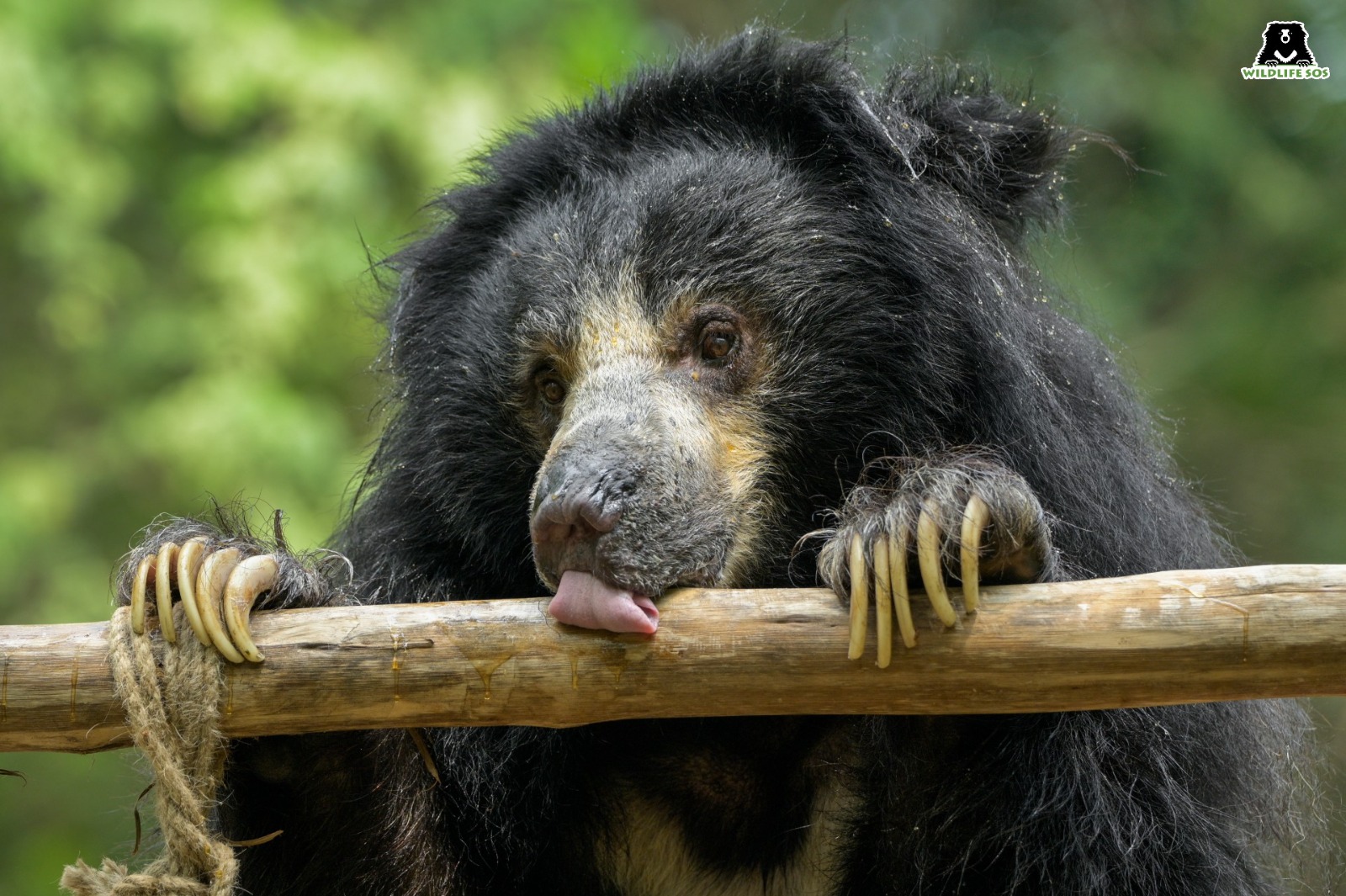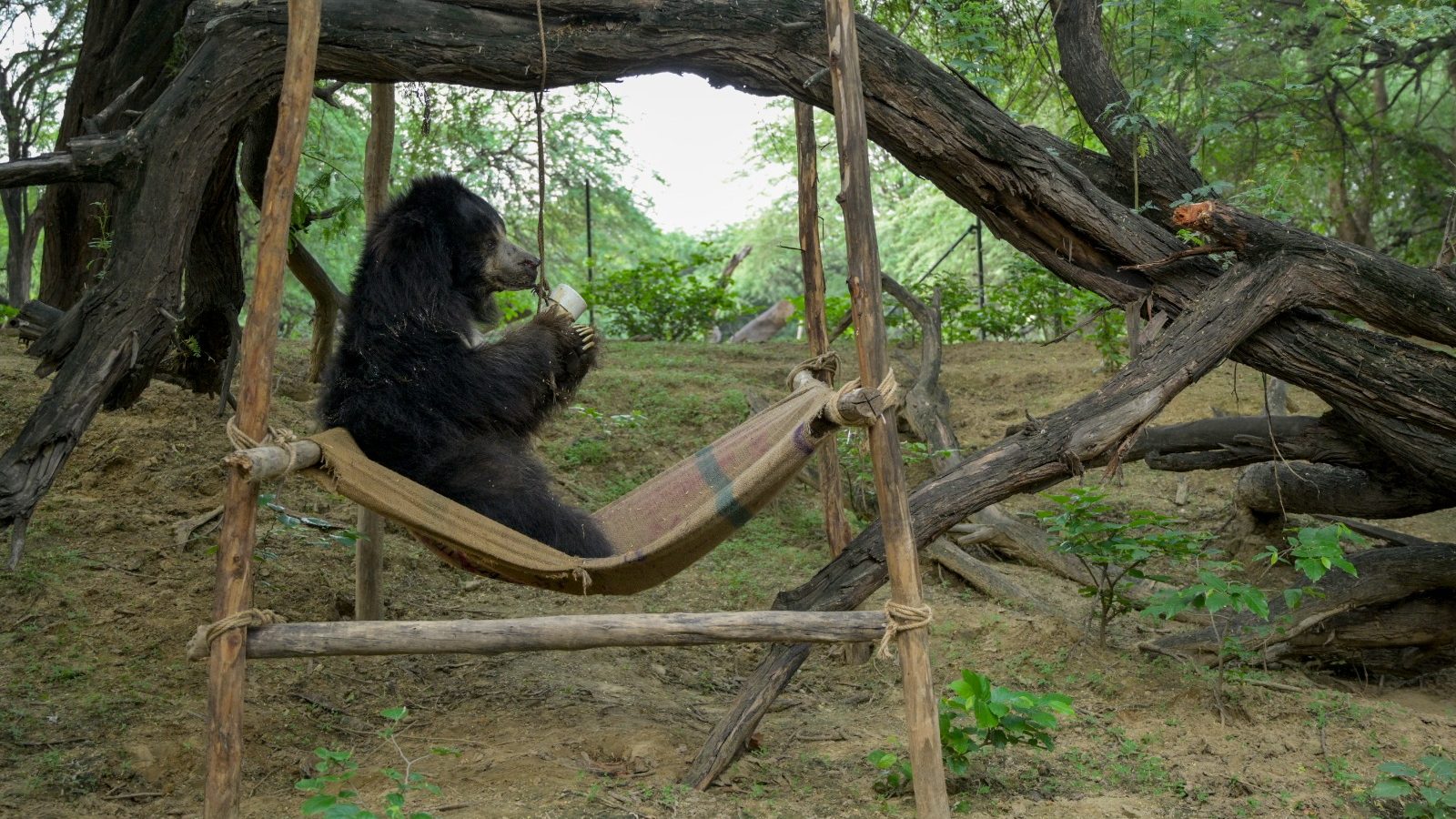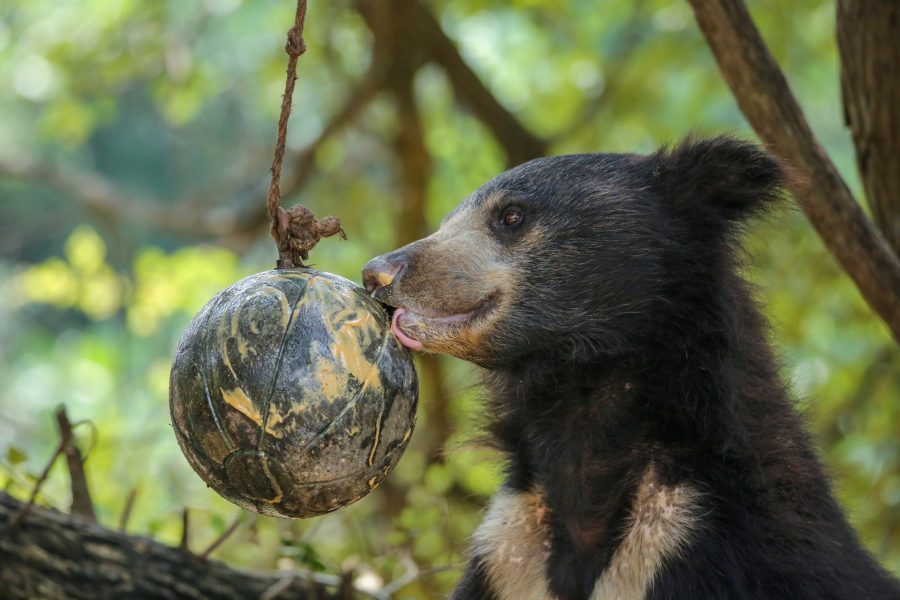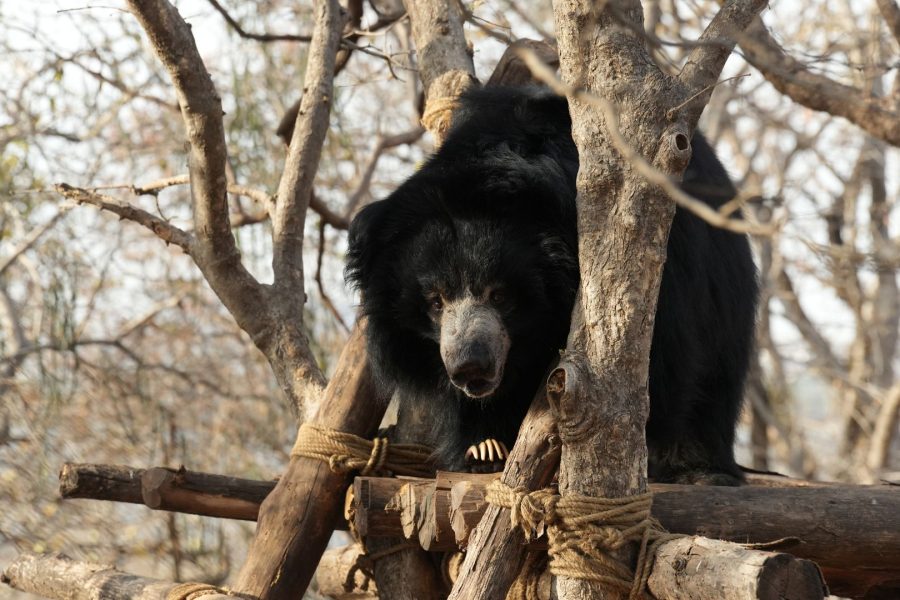Sloth bears, a species found only in India, Nepal and Sri Lanka, not only hold physical strength, but also have remarkable cognitive abilities. The understudied species continues to fascinate researchers and wildlife conservationists observing the advanced abilities of sloth bears, which include problem-solving and conceptual thinking. At Wildlife SOS centres, where care for rescued and rehabilitated sloth bears is constantly being provided, we have had the privilege to witness the outstanding discernment that these mammals display. Based on this and the research initiatives taken up by the organisation, we present the diverse range of intelligence exhibited by sloth bears at Wildlife SOS centres and in the wild.
1. Emotional Intelligence
The unique behaviour of sloth bears carrying their cubs on their backs for extended periods highlights exceptional mindfulness among them. Unlike other bear species, sloth bear mothers carry their young on their back across varied terrains and activities for the first six to nine months, showing an advanced tendency to provide them with unwavering attention and protection. This behaviour requires the mother bear to adjust her movements and activities to ensure the safety and comfort of her cubs. While navigating the wild, foraging for termites, or confronting potentially hazardous situations that may include battling predators, the mother bear always displays defensive practices to safeguard her cubs. This ability reflects not only the strong maternal instincts of sloth bears, but also their mental aptitude that can ensure the survival of the offspring in their natural environment.
2. Problem-Solving Skills
The way bears utilise their paws and claws reveals their ability to assess and respond to their surroundings. Sloth bears, with their 3-inch curved claws, can not only dig efficiently to unearth insects, but can also transform them to become formidable weapons when they’re faced with danger. This ability to repurpose their physical attributes based on the situation indicates their cognitive flexibility that is crucial for their survival.

At Wildlife SOS’s Bannerghatta Bear Rescue Centre (BBRC), termite-hunting is an activity that boosts problem-solving skills of rescued sloth bears when they engage their instincts and intelligence to locate and extract termites from the infested logs. This process requires the bears to analyse the structure of the logs, determine the best spots to claw into, and efficiently use their claws and mouths to access the insects. By figuring out how to maneuver the log’s crevices and retrieve termites, the bears exercise their cognitive abilities to overcome challenges, much like they would in the wild.
3. Memory and Learning
Sloth bears exhibit strong memory capabilities that are crucial for their survival in diverse habitats. They can remember locations of food sources, navigate complex territories, and recall behaviours learned over time. At Wildlife SOS, we have witnessed rescued bears adapting to new environments and effectively responding to prompts that are supplemented with rewards. This is an act of positive conditioning and involves ample provision of edible treats for sloth bears when they cooperate during essential medical interactions. Mental activity is stimulated by enrichments such as puzzles that dispense treats when solved correctly. Over time, memory in sloth bears enhances through repeated exposure and practice. They gradually begin to associate specific actions with rewards.
Shari, one of the resident sloth bears in BBRC, has developed a clever technique to retrieve dates that are filled along with hay within feeder ball enrichments. These balls have holes all over them. Shari holds the ball and shakes it vigorously, causing the heavier dates to settle at the bottom of the enrichment, and for some to easily roll out from the low placed holes. For the ones that don’t, she lies down and positions her mouth to the low placed holes, from which she can suck out the remaining dates! This behaviour showcases the ability of a sloth bear to remember and refine an effective strategy.
4. Social Skills
Wildlife SOS’s studies on the behaviour of wild sloth bears using camera traps in the Deccan Plateau region of South India highlight the social intelligence of these bears. Sloth bears exhibit complex communication strategies, including chemical signaling through urination, defecation, and pedi-marking (by rubbing their feet in the ground) near den entrances. This form of communication allows them to convey information about their presence to other bears, facilitating social interactions within overlapping home ranges. Sloth bears are known to be solitary animals. Surprisingly, camera traps captured two mother sloth bears, likely to be related, sharing the same maternal den, and documented a non-injurious conflict between a juvenile and an adult male near the den. The two recordings showed the sloth bears’ ability to navigate social dynamics and maintain relationships within their communities. These behaviors highlight their skillful social capacity to maintain an intraspecies coexistence in shared habitats.
From their problem-solving skills to their capacity for learning and memory retention, sloth bears display cognitive traits that are essential for their survival in the wild. Another mammal displaying extraordinary cognitive abilities is the elephant — the gargantuan animal is also a gentle giant that possesses long-lasting memory and tremendous social intelligence!
To know more about the wonderful world of wildlife, do subscribe to Wildlife SOS’s newsletter. To support our efforts towards caring for rescued bears, consider making a donation by clicking here.





